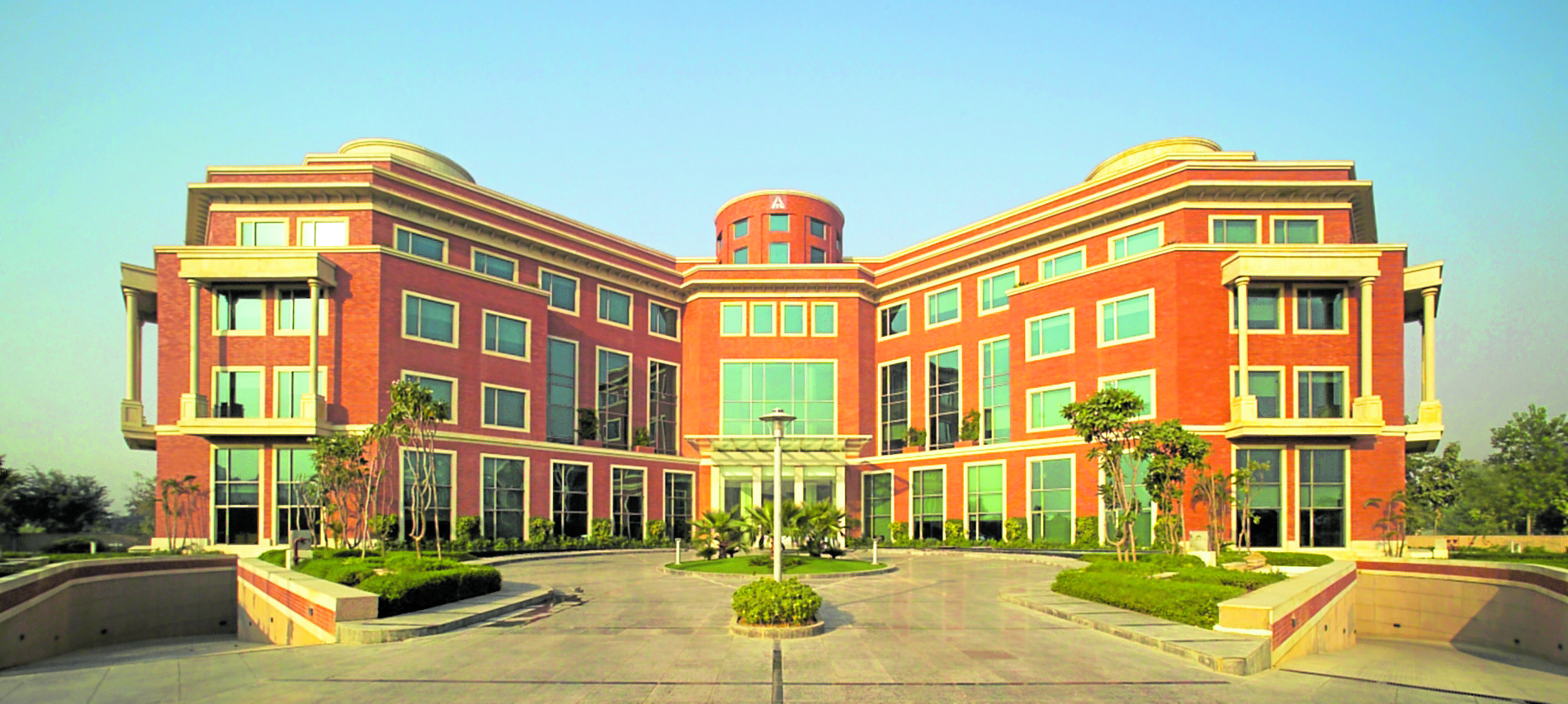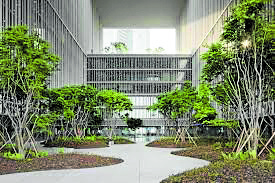Spaces play an important factor where one’s health and well-being are concerned.
As we may have learned in the past 15 months, evading COVID-19 isn’t up to humans alone. The quality of our spaces also matters a great deal in keeping us from catching the dreaded coronavirus. We are reminded that natural- and well-ventilated spaces are better and that we need to steer clear of those areas where air circulation is poor. Sick building syndrome is real.
Sustainably designed spaces are becoming less and less of a novelty and more of an absolute necessity. Office buildings that are future-proof now means these are pandemic-proof as well. These do not only assure occupants of healthy working conditions but guarantee that the structure contributes to conserving the earth’s resources.
Here are some LEED-certified office spaces in other countries that have earned the merit of being safe, healthy, highly efficient and energy-saving spaces.

Lè Architecture Taiwan
It’s particularly hard to miss, especially because it’s the sole egg-shaped structure amid a sea of boxy high-rises along the Keelung River in Taipei’s Nangang District. Lè Architecture was designed by Aedas, which drew inspiration from the shape of river pebbles. According to the architecture firm, the design exhibits “a unique aesthetic concept that conveys the idea of roundness and elegance, as well as strength and character.”
Spanning one side of Lè Architecture’s exterior is a series of vertical aluminum fins and green planters. The “breathing facade” serves as shade for office spaces inside the building and keeps the interior temperature cool, minimizing the need for airconditioning, especially during summer. The plants also serve as air filters. The building also houses efficient and healthy office spaces and communal areas such as pantries, cafes and small libraries where employees can retreat to.

The Crystal England
It boasts of 70 percent less carbon dioxide emissions compared to other offices in the United Kingdom, an annual heating bill which amounts to zero and water closets that only use recycled water. The Crystal, nestled on the Royal Docks, East London, has Outstanding BREEAM and LEED Platinum accreditations–both uncompromising when it comes to green and sustainable building design.
A Sustainable Cities Initiative by Siemens, the all-glass, highly sustainable building was designed by Wilkinson Eyre in collaboration with interior architects Pringle Brandon Perkins + Will. It encourages sustainable transport with its 15 e-vehicle charging points and 66 parking slots for bikes. It is a 2-minute walk from the train station; utilizes natural light with its triple glazed windows; recycles rainwater; and uses natural heat sources, among others.
ITC Green Centre India
Located in Gurgaon, India, ITC Green Centre was accorded the prestigious LEED Platinum certification in 2004.
It recycles each drop of rainwater that falls on its grounds for gardening and for the building’s toilet cisterns. Large, double-glazed windows keep the interiors of the building cooler and provide plenty of natural light in. Careful consideration was made to avoid the use of reflective glass so as not to reflect the heat and put the environment outside that building at a disadvantage.
Sensors detect how much airconditioning each room needs, according to how many people are inside while rooftop solar panels supply energy for heating water, neon signs and some of the night lighting.
AmorePacific World HQ South Korea
It serves as the headquarters of South Korea’s beauty giant so it is unsurprising that it does not disappoint when it comes to style and value. AmorePacific World HQ, located in Seoul’s Yongsan district, combines office and communal spaces anchored by an expansive central courtyard that allows natural light into the building.
Rooftop gardens teeming with lush greenery at the building’s upper levels and water features easily make the structure an oasis in central Seoul. Designed by David Chipperfield Architects, the building’s form takes full advantage of natural ventilation and daylight. The facade is able to deflect heat and harsh sunlight with its brise soleil cladding. It was granted its LEED Gold certification in 2018.
A museum, a library, a tea room and a retail area could be found at the building’s lower level. The atrium also serves as a main event space for art installations, concerts, lectures and other cultural activities. There is also a daycare center, and corporate amenities such as restaurants and cafes for AmorePacific staff and fitness and health facilities.

The Green Building Kentucky, USA
Age is but a number and this former dry goods store in the East Market district of Louisville is proof that you can be 115 years old but be hip, cool and sexy. form environment research (fer) studio breathed new life into the century-old structure and transformed it into The Green Building, the first LEED Platinum project in its city and the LEED certified adaptive reuse project in the state of Kentucky.
Now a mixed-use commercial and office space, the original mortar shell of the structure was kept intact as the interiors were transformed to create a sense of openness and allow more natural light. The Green Building’s landscaping requires minimal use of water, which it gets from its own rainwater collection system. It utilizes 81 solar panels, a 1,100-gallon ice storage system and 12 geothermal wells underneath the building, saving more than enough pounds of carbon dioxide per month to offset the carbon footprint of all its employee’s vehicles.
Article and Photo originally posted by Inquirer last July 12, 2021 9:04pm and written by Din M. Villafuerte.









More Stories
Vista Land Celebrates 50 Years with Sandiwa: An Event Honoring Leadership, Legacy, and the Filipino Dream of Homeownership
Vista Land Celebrates Love Month in Ilocos Region
Vista Land Bridges Cebuano Heritage and Progress with Valencia by Vista Estates